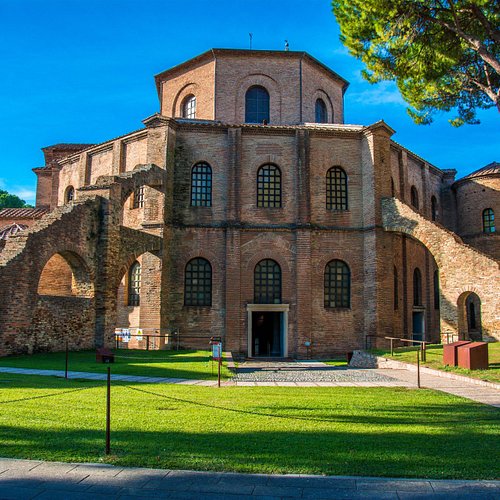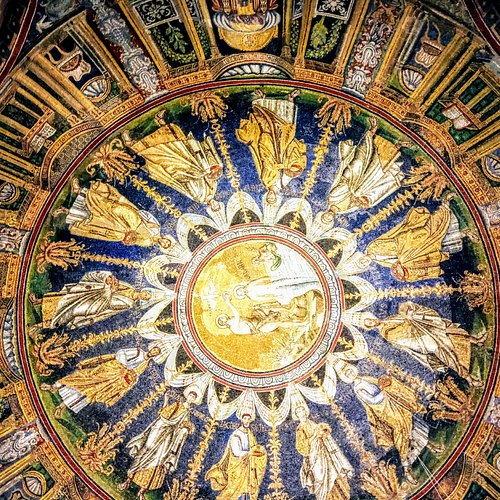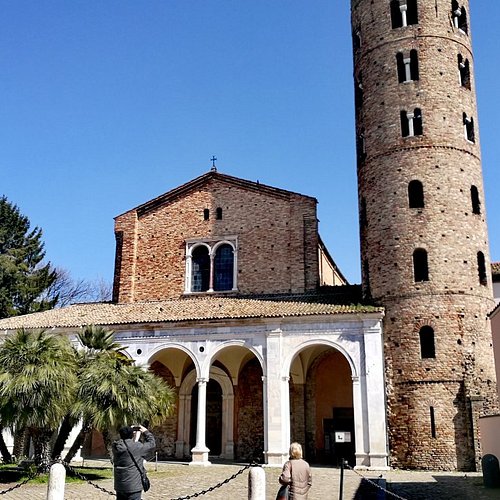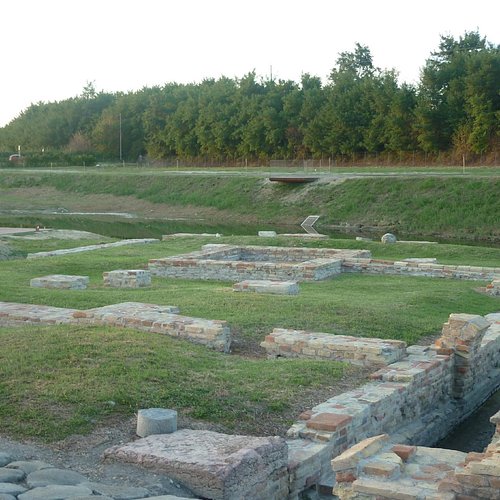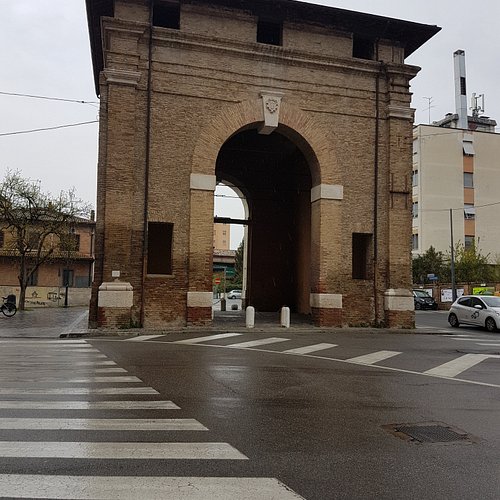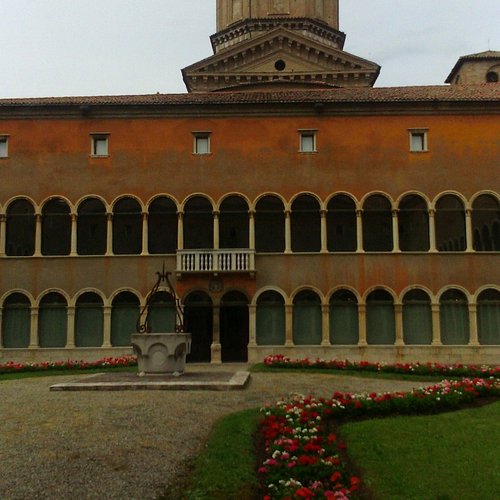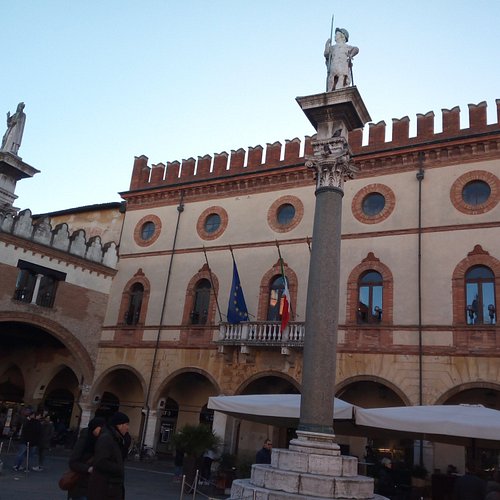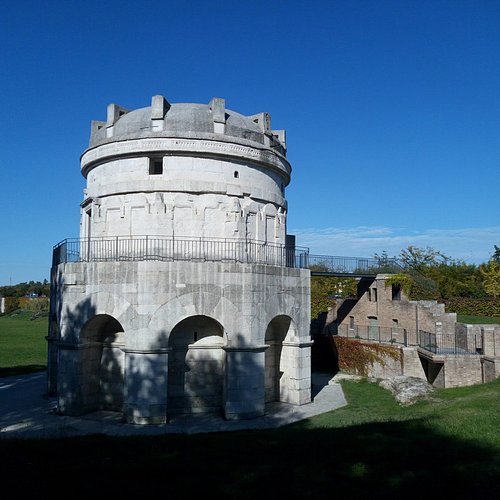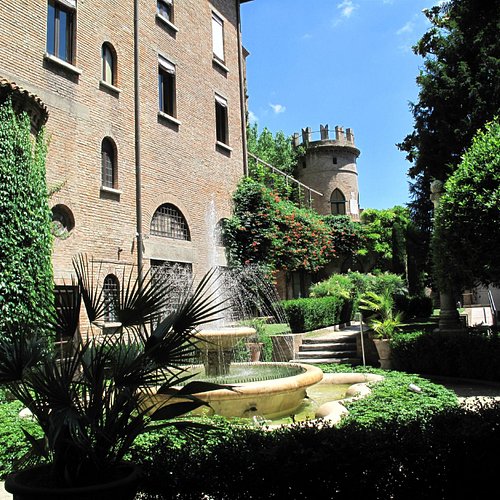What to do and see in Ravenna, Emilia-Romagna: The Best Historic Sites
Ravenna once was the capital of the Byzantine Empire in Italy, and it still has amazing mosaics recalling that heritage. Also make sure you visit Dante's tomb, as well as the little pile of rubble where local residents hid his urn during WWII to prevent it from being damaged.
Restaurants in Ravenna
1. Basilica San Vitale
Overall Ratings
5.0 based on 4,556 reviews
History As a symbol of the Archiepiscopal Chancellery of Ravenna, San Vitale is one of the greatest works of late Roman art. Famous for its mosaics commissioned by Archbishop Maximian (546/556 AD), the basilica is a place of contemplation. While the body descends its steps the spirit rises to the Truth. A masterpiece to be admired for its evident beauty and its hidden, precise, evocative theological argument.
Reviewed By DRJAMESV - Makawao, United States
This basilica is named for the saint martyred in 303 AD. However, its gold gilded mosaics are a testament to Emperor Justinian and his wife Queen Theodora. I am likely a descendent of this saint, since my surname is Vitale also. The walking distance Ai Giardini di Vitale hotel is also stellar.
2. Battistero Neoniano (Battistero degli Ortodossi)
Overall Ratings
4.5 based on 1,418 reviews
The most ancient of Ravenna monuments, at least with regard to when building began, it dates to the end of the 4th or the beginning of the 5th century.
Reviewed By asiyahnoemik - Pula, Croatia
Among the great beauties of Ravenna is certainly Battistero Neoniano (Battistero degli Ortodossi). Wonderful place with significant value both historical and artistic. Battistero Neoniano is one of the oldest monuments in Ravenna. It was built in the early 5th century by the will of Bishop Urso. In the following period, significant restoration works were carried out by Bishop Neone (450 - 475), the complete renovation of the dome and the realization of the interior decoration that today embellished the interior of the Baptistery. It was built in the octagonal shape and made of brick. The interior of the Baptistery is breathtaking with its beauty it is divided into two orders of superimposed arches, offering a very rich decoration divided into three parts: marble in the lower part, stuccos in the intermediate area and mosaics in the upper one with a clear Hellenistic-Roman imprint. At the center of the dome, a large medallion contains the scene of the baptism of Christ, immersed in the waters of the Jordan River which is the oldest testimony of a scene of the baptism of Christ made in mosaic in a monumental building. At the center of the Baptistery, we find the octagonal tub of Greek marble and porphyry. The decorations are fantastic and leave no one indifferent.
3. Basilica di Sant'Apollinare Nuovo
Overall Ratings
4.5 based on 1,993 reviews
Reviewed By asiyahnoemik - Pula, Croatia
Ravenna shows us all the beauty of early Christian mosaics in beautiful basilicas, churches, chapels and museums. Sightseeing and enjoying these beauties is a privilege. So with Basilica di Sant'Apollinare Nuovo, we enjoyed every look. Her history is extremely interesting. The basilica is a historically important early Christian monument. At the beginning of the 6th century, it was built by the Ostrogothic King Theodoric I, as a chapel within his royal palace (cited by Liber Pontificalis). As Theodoric was of Aryan faith, in 504 the church was consecrated as Aryan. After the Ravenna was occupied by the Byzantines, it was converted into an orthodox (Catholic / Orthodox) church, and Emperor Justinian I. The Great renamed it 561 to Sanctus Martinus in Coelo Aureo ("St. Martin in the Golden Sky"). It was renamed in 856 when the remains of the Sant'Apollinare ( Holy Apolinaria ) by which it was named were transferred. Among the many beautiful mosaics we can see, the mosaic of Christ on the throne surrounded by angels, mosaic display Theodoric's palace, Mosaic Adoration of the Magi ...... A magnificent Basilica with great artistic and religious value.
4. Antico Porto di Classe
Overall Ratings
4.5 based on 146 reviews
The ancient port of class back to life, founded by the Roman emperor Augustus, flourishing age of empire, of Theodoric and the Byzantine rule, when Ravenna and Classe reached their apogee political and economic.
5. Porta Serrata
6. Loggetta Lombardesca
7. Palazzo del Comune o Palazzo Merlato
Overall Ratings
4.0 based on 33 reviews
Reviewed By asiyahnoemik - Pula, Croatia
The Town Hall of Ravenna (Palazzo Comunale di Ravenna) looks onto the main square of the city, Piazza del Popolo. In this beautiful square, the Palace is dominated by its beauty. The complex now consists of two adjacent buildings joined by a vault (called Cavalcavia) opening onto Via Cairoli, the former is the ancient Palazzetto Veneziano, situated to the North of the square. It was erected by the Venetians as the seat of their governors some years after conquering the city. To the west of the square rises Palazzo del Comune (also known as Palazzo Merlato), the latter building, that was constructed between the late 17th and the 18th century on the place where the river Padenna used to flow in the Middle Ages. Wonderful historic Palace in a beautiful square, for history lovers as if we were in the Middle Ages.
8. Porta Sisi
9. Mausoleo di Teodorico
Overall Ratings
3.5 based on 834 reviews
Reviewed By 29gw
Definitely, worth a visit. Maybe overshadowed by Ravenna's mosaics, this magnificent monument was once by the seashore...! The lady at the Tourist Info Office near by was very nice and helpful, listened and offered options. Near by are the remains of a magnificent fortress (Rocca Brancaleone). All within walking distance from the city center...!

